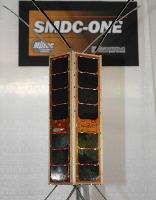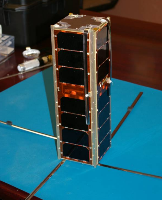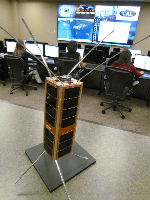| Satellite name | ORSES (ORS 1, ORS Enabler Satellite) |
|---|---|
| Type | CubeSat |
| Units or mass | 3U |
| Status | Reentry 2016-01-03. Was operational until 2013-11-23, a few days. |
| Launched | 2013-11-20 |
| NORAD ID | 39386 |
| Deployer | P-POD (Poly-Picosatellite Orbital Deployer) |
| Launcher | Minotaur I |
| Organisation | US Army Space and Missile Defense Command |
| Institution | Military |
| Entity type | Government (Civil / Military) |
| Headquarters | US |
| Launch brokerer | Tyvak, ? |
| Partners | DoD Operationally Responsive Space Office, U.S. Space & Missile Defense Command |
| Oneliner |
Provide communications and data capabilities for underserved tactical users based on SMDC-ONE. |
| Description |
Provide communications and data capabilities for underserved tactical users. Based on the SMDC-ONE satellite that flew in December 2010 and on the OUTSat mission with an upgraded communication radio and encryption. The mission for ORSES was to demonstrate a new protocol, called LEOPARD, and validate the KI-55 Type-1 Cryptographic device for spacecraft. The LEOPARD protocol was designed to allow data transfer between ground terminals and LEO satellites without a priori knowledge of either asset’s position. |
| Results | |
| Notes | |
| Sources | [1] [2] |
| Photo sources | [1] [2] [3] |
| On the same launch |
|
Last modified: 2023-06-03



